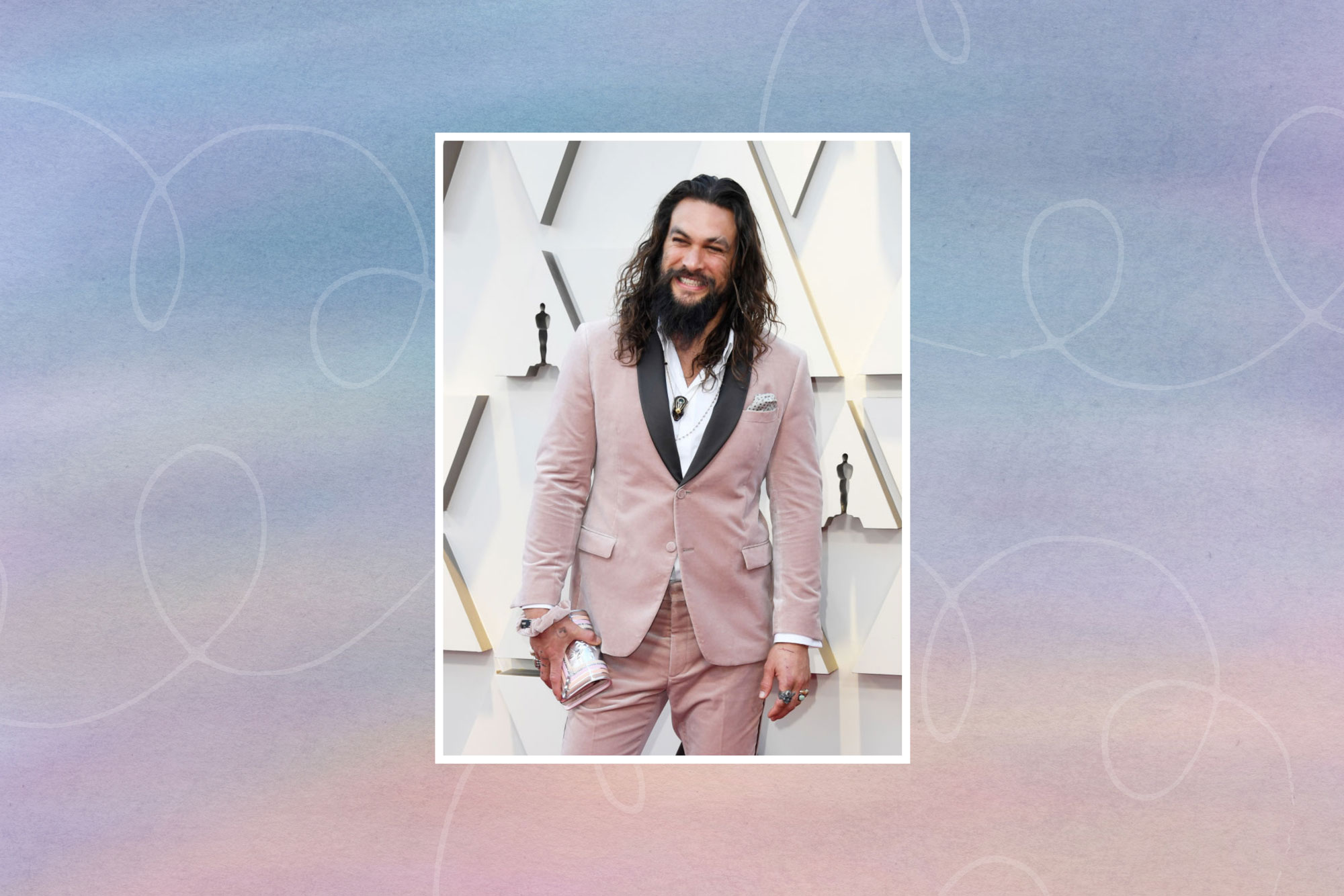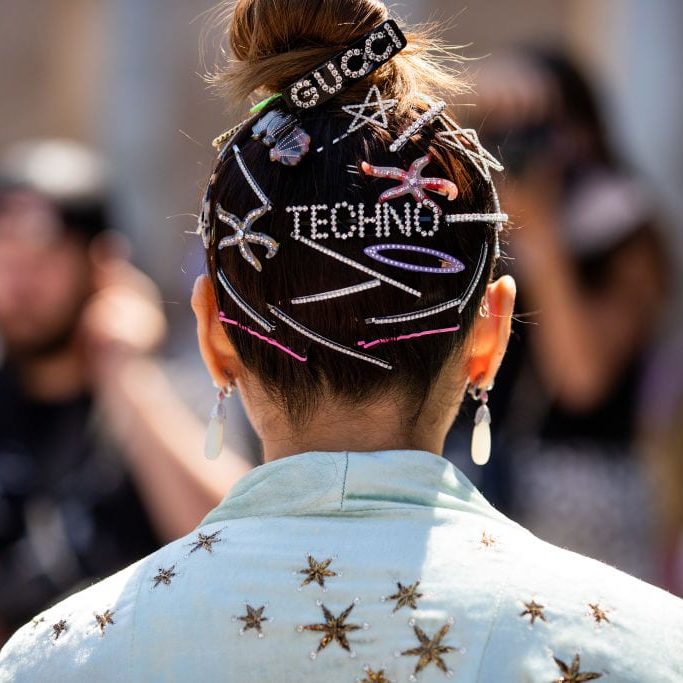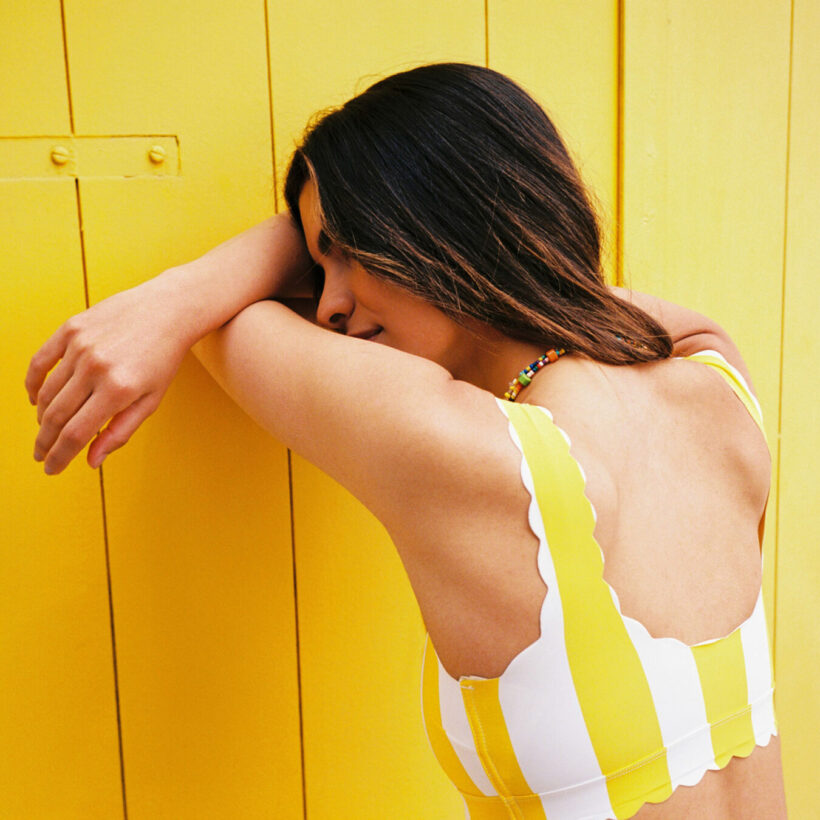For those with hair long enough to tie up, it’s hard to imagine what we would do without our trusty hair ties. They help us express ourselves through different hairstyles, give our necks a breather on hot, sticky days, and hide the fact that maybe we extended our dry shampoo schedule a tad too long. They also keep our strands out of our faces when we exercise, cook, make art, and play with our kids. And, for some of us, they are an everyday piece of jewelry attached to our wrists in case of emergency.
As ubiquitous as hair ties are, not all of them are made equal. We take a deep dive into the common types of hair ties, how to choose the right kind of tie, and how to prevent breakage.
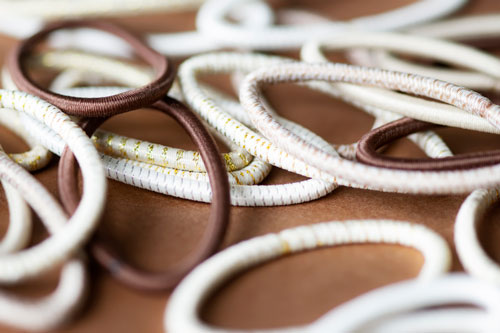
Meet the Experts
Marisa Corrado is a hair accessories expert with over 20 years of experience designing hair ties and founder of Nouveau + Vintage.
Trey Gillen is a hairstylist and creative director of education at SACHAJUAN.
The Different Types of Hair Ties
Cruise down any hair accessory aisle at your local drugstore or beauty supply, and you’re faced with various ways to pull your hair back and style your strands. Below are some of the most common hair ties to keep on your radar.

- Spiral Hair Ties: These hair ties are also often referred to as coil or telephone cord elastics and are “perfect for that messy up-do look,” says Marisa Corrado, a hair accessories expert and founder of Nouveau + Vintage. This type of hair tie is “created from an injected mold,” and the coils “do not have any seam,” Corrado adds, noting that, for these reasons, this type of hair tie is “good for hair that already has some breakage.” Another great thing about this hair tie style is its many great style options — from various colors to metallics to glitter and even some patterns — which makes it a fantastic accessory, too.
- Elastic Hair Ties: These are those more traditional hair ties that you can find in bulk at virtually any drugstore. While many wear them independently, Corrado recommends using them to spice up your hairstyle by wearing them under fun hair accessories “like fancy metal hair clips.” Doing so helps keep things secured in place.
- Scrunchies: Scrunchies are “elastics covered by fabrics of various types and widths,” says Corrado, adding that this hair tie style has the most personality. “They can make a bold statement or coordinate with your outfit,” Corrado explains. Another great thing about scrunchies is that they can be more delicate on the strands, and opting for one made of silk can help keep hair out of your face without the risk of friction while you sleep.
- Seamless Hair Ties: “These are a bit of a step up from your traditional hair tie,” says Corrado. “Usually made from nylon, they are rolled into a ring shape, leaving them completely seamless with no glue seam,” she adds, noting how these are a great choice for working out “as they are so soft [but] can be tied tightly.”
- Polyband Hair Ties: These little rubber band hair ties are “good for setting up an elaborate updo,” says Corrado, noting that they “strategically hold small amounts of hair,” making them a great choice for more intricate styles. They’re also great for tying off the ends of braids and pulling back bangs. There are some softer options if you want a smaller hair tie but are afraid of the possible damage caused by this type. Case in point: Slip designed a collection of Minnie Scrunchies that helps prevent breakage. They might not work for every style — especially some of the Y2K trends that have made a comeback — but they are a good alternative to the rubber bands.
- No-Crease Hair Ties: The no-crease style of hair ties has become a favorite amongst hair enthusiasts, and, for a while, it seemed like they “were the only hair ties you could find,” notes Corrado. Typically wider in size and made of a flat elastic secured by a single knot, “their width and softness all them to be creaseless,” Corrado explains.
How to Choose the Best Hair Tie

When choosing a hair tie, “understanding hair tie materials is very important,” says Trey Gillen, a hairstylist and creative director of education at SACHAJUAN. If you’re worried about breakage, Gillen recommends choosing soft and silky materials over rubber or plastic.
Another important thing to consider is hair type. Some hair ties can be more universal compared to others; however, if you have fine hair, Gillen says you have “more to consider than more coarse textures.” Gillen says that “a silky elastic material would be best” for those with fine hair because it causes less friction. Additionally, Gillen recommends something smooth and gentle — like that silky elastic material — for those with frizzy or curly textures since they “are more prone to getting hair ties tangled.”
Lastly, some hair ties are designed for specific reasons or can elevate certain looks. For example, spiral hair ties can help create a perfect messy bun. And those teeny tiny poly band hair bands are perfect for small braids and other styles. Before selecting a hair tie, consider how you plan on styling your hair and what hair tie would be best for the style.
When it comes down to it, if you aren’t careful, hair ties can cause tangles, breakage, and damage. So, while choosing a hair tie type is important, it’s even more essential that you are gentle with your hair tie use and take steps to protect hair from potential damage.
How to Protect Hair from Hair Tie Damage
“Breakage occurs where the hair tie sits on your scalp, and the hair is wrapped inside it,” Gillen explains. “Hair ties can rub on your scalp, causing irritation and breakage but also break your hair off in the tie — either from the material the tie is made of or when pulling the tie out,” Gillen adds.
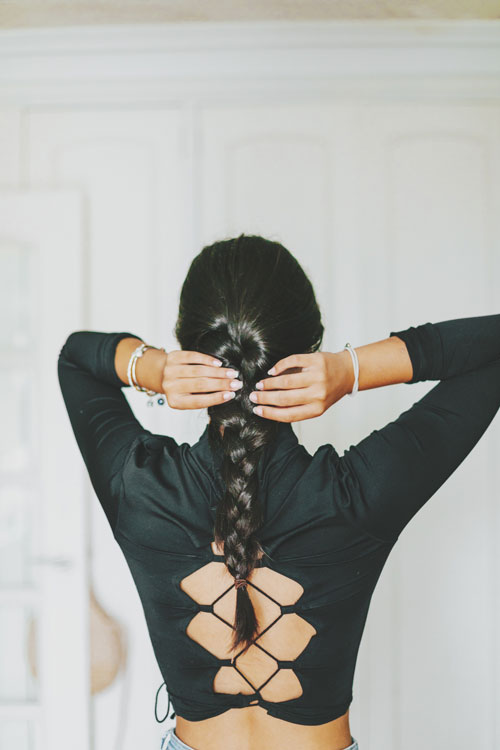
To protect hair from hair tie damage, you can do a few things. First, Gillen suggests biotin for hair health as this vitamin can strengthen the hair strands. “Also, use a strengthening shampoo and conditioner,” says Gillen, adding that doing so will help boost the strength and quality of your hair.
Gillen says to avoid tying your hair too tight and to “keep hairbands loose and not pulled right up against your scalp.” He also says if you’re worried about breakage caused by a ponytail, a braided style might be a better option, and the hair tie is only required on the ends of your hair vs. against the scalp, where breakage is more likely to occur.
If ponytails are your go-to, there is a trick for preventing breakage. Gillen says to “move your ponytail spot around on your head, instead of always putting your pony in the same place” and to consider different ways to wear your hair up, such as a high pony, low pony, top knot, and braided.
Lastly, considering how you remove hair ties is important for preventing damage. Take a gentler approach rather than pulling and tugging the hair tie away from your strands. And, if you go for a style that requires the teeny tiny poly band elastics — a.k.a. mini rubber bands — Gillen says to “pop them” by touching the edge of your scissors to it (being careful not to snip your actual hair, of course!). “That is usually enough to tear the band without doing anything to your hair,” Gillen adds.
We only recommend products we have independently researched, tested, and loved. If you purchase a product found through our links, Sunday Edit may earn an affiliate commission.
